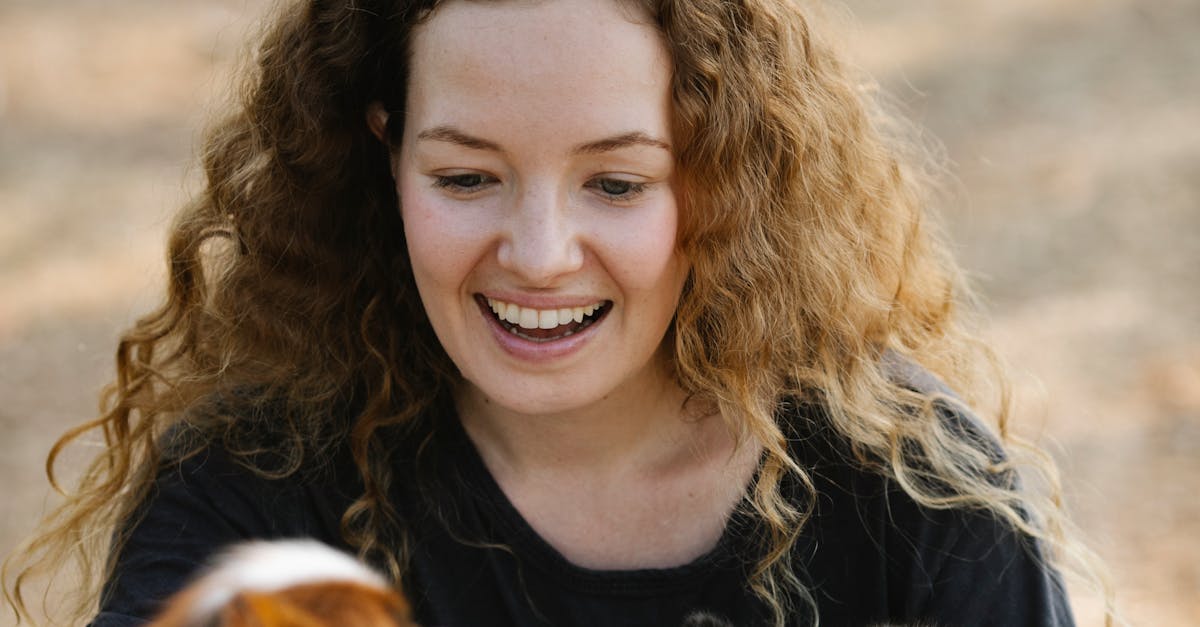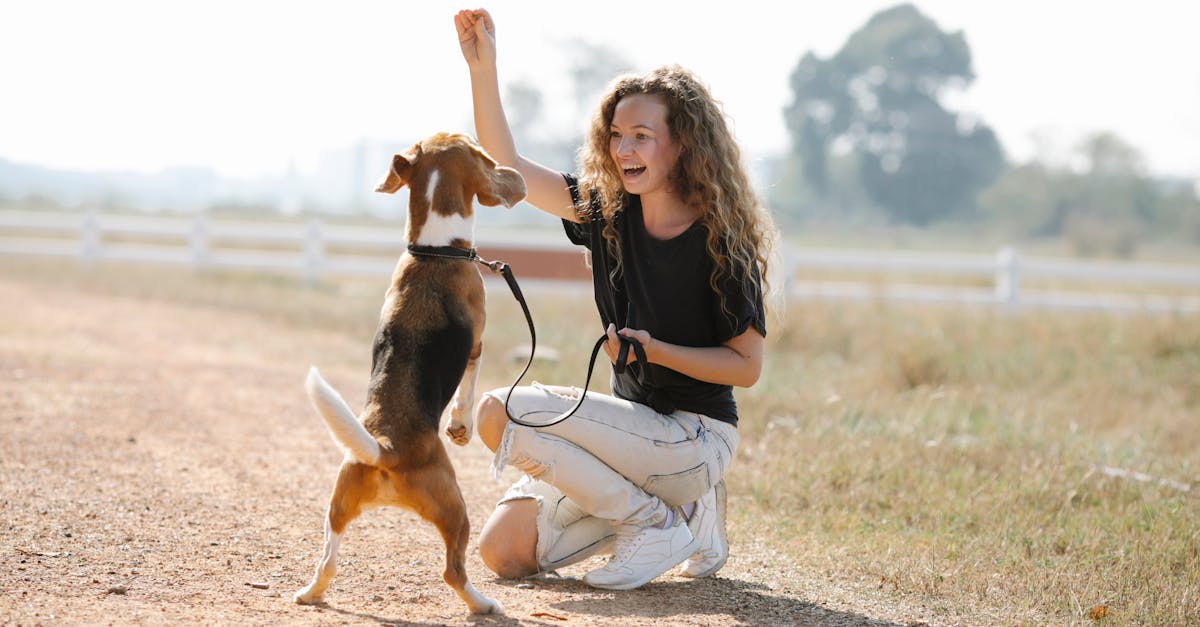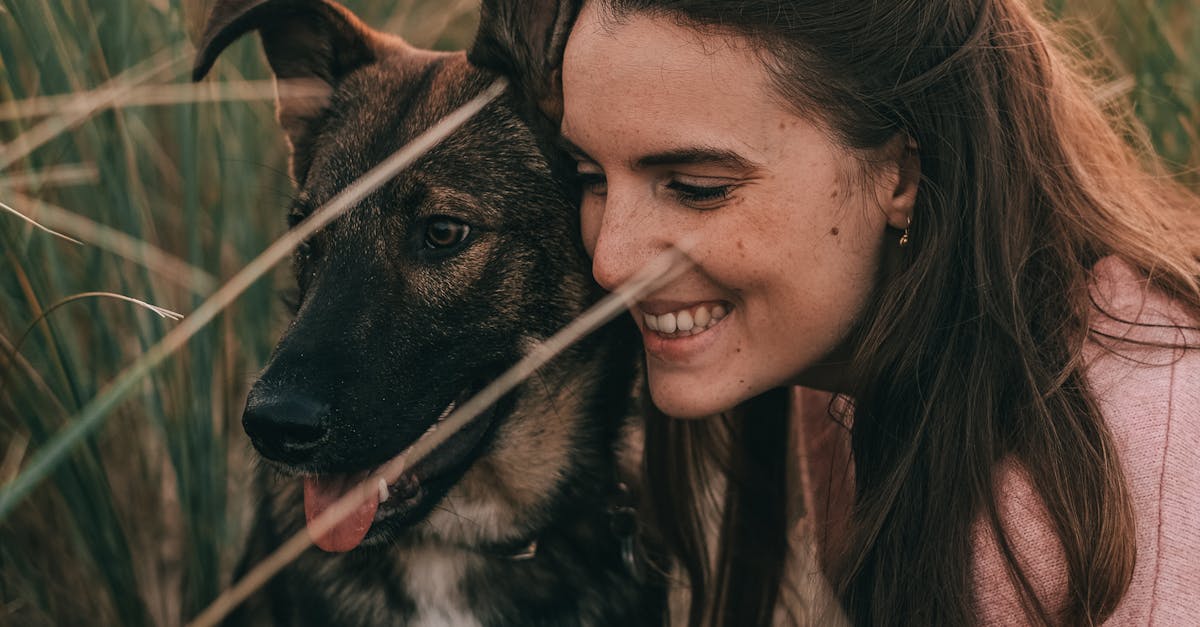A Journey into the World of Dog Supplies 🐾
Choosing the right pet supplies for your dog can often feel like a daunting task. I remember vividly when I first brought my golden retriever, Max, home. The excitement was overwhelming, but so was the number of choices available for his care. From dog food to collars, toys to grooming essentials, every product seemed equally important yet confusing. Through trial, error, research, and valuable advice from pet experts, I managed to create an ideal setup for Max. My objective here is to simplify this task for you by sharing my journey and the invaluable lessons I learned.
Understanding Your Dog's Needs 🏡🐶
Every dog is unique, and so are its needs. Understanding your dog’s specific requirements is the foundational step before you venture into the world of pet supplies. Several factors determine the kind of supplies your furry friend will require.
Breed and Size
Different breeds and sizes come with unique needs. Large breeds like Great Danes or Saint Bernards will need larger beds and heavier duty leashes compared to smaller breeds like Chihuahuas or Dachshunds. Matching the size and breed-specific requirements, such as particular grooming needs or exercise levels, will simplify your decision-making process.
Age
A dog's age affects its dietary requirements, energy levels, and overall care regimen. Puppies will need chew toys to help with teething, whereas seniors will benefit from orthopedic beds and joint supplements. Understanding the life stage of your dog will assist you in covering all bases from nutrition to comfort.
Pro Tip: Proper identification of your dog’s breed mix can provide valuable insights into special care needs.
Health Conditions
If your dog has any health conditions, whether it’s skin sensitivities, allergies, or chronic illnesses, this will significantly influence the type of supplies they need. Consulting with a veterinarian will provide clarity on the best products designed for such conditions. Your vet may recommend specific diets, grooming products, and even supplements tailored to managing your dog’s health issues.
Must-Have Dog Supplies 🛒
Navigating through the endless aisles of pet stores can be overwhelming. Here’s a detailed breakdown of essential supplies, divided into categories for easier understanding.
Nutrition: The Foundation of Health 🥩🥕
Quality Dog Food
Choosing the right dog food is pivotal for your dog’s health and well-being. Based on my experiences and veterinarian consultations, here's what to look for:
- Ingredients: Look for named protein sources (like chicken, lamb, or beef) and avoid fillers like corn, wheat, and soy.
- Nutritional Content: Ensures a balanced diet with appropriate levels of protein, fat, and essential vitamins.
- Life Stage: Ensure the food matches your dog's life stage (puppy, adult, senior).
Treats and Chews
Treats are not only great for training but also for showing affection. However, moderation is key. Dental chews can also help in maintaining oral hygiene. Pay attention to calorie content to maintain a balanced diet and prevent obesity.
Exploring Food Options
| Food Type | Pros | Cons | |------------|--------------------------------------------|-------------------------------------------| | Dry Kibble | Easy to store, helps with teeth cleaning | May contain preservatives | | Wet Food | Higher moisture content, tastier | Can spoil quickly once opened | | Raw Diet | Mimics natural diet, may improve coat | Risk of bacterial contamination | | Homemade | Full control of ingredients | Requires significant time and knowledge |
Pro Tip: Always check for recalls and consult your vet before switching your dog’s diet. Regularly reviewing your dog’s diet with your vet will ensure they receive optimal nutrition for their health needs.
Grooming Essentials: Keeping Your Dog Fresh ✂️🐕
Brushes and Combs
Your dog’s coat type will determine the kind of brush or comb you need. A slicker brush is ideal for thick, double coats, while a rubber curry brush works wonders on short-haired breeds. Regular grooming sessions prevent matting, distribute natural oils, and allow you to check for abnormalities such as lumps or parasites.
Shampoo and Conditioner
Opt for products specifically designed for dogs. Human shampoos can be too harsh on their skin. If your dog has skin issues, medicated shampoos might be necessary. It’s also essential to use a conditioner if your dog has a long or curly coat to prevent tangling and maintain shine.
Nail Clippers and Grinders
Keeping your dog’s nails trimmed is essential for their comfort and health. Guillotine clippers and dremel grinders are popular choices, but whichever tool you use, ensure it’s suited to your dog’s size and nail thickness. Regular nail trimming prevents overgrowth and associated pain or injury.
Ear Care
Proper ear care is crucial to prevent infections. Use dog-specific ear cleaning solutions and cotton pads for gentle cleaning. Be mindful of any signs of infection such as redness, bad odor, or excessive scratching, which would necessitate a vet visit. Regular ear cleaning should be part of your grooming routine, especially for breeds prone to ear issues like Cocker Spaniels and Basset Hounds.
The Joy of Play: Toys and Exercise Gear 🎾🏋️♂️
Toys are crucial for a dog's mental and physical stimulation. They prevent destructive behavior and foster a strong bond between you and your furry friend.
Interactive Toys
Toys like puzzle feeders and treat-dispensing toys challenge your dog's mind. They are particularly great for breeds known for their intelligence, such as Border Collies or Poodles. Interactive toys can also help reduce anxiety and boredom, especially when you're not around.
Chew Toys
Selecting durable chew toys can save you from replacing them frequently. My personal favorites are made of natural rubber, which is safe and long-lasting. Chew toys are essential for dental health, reducing plaque and tartar buildup.
Fetch Toys
Balls, flying discs, and tug ropes are excellent for interactive play. Ensure these toys are appropriately sized for your dog's mouth to prevent any choking hazards. Fetch toys also provide essential exercise, particularly for high-energy breeds.
Exercise Gear
Depending on your dog’s activity level, investing in exercise gear like agility equipment can be beneficial. Tunnels, weave poles, and jumps can provide excellent physical and mental stimulation, helping to keep your dog fit and agile.
Pro Tip: Rotate your dog's toys to keep them engaged. Introducing an old toy after a while can reignite their interest. This method keeps things fresh and helps prevent your dog from becoming bored with their current toy selection.
Pet Tech: Enhancing Pet Care with Technology 📱🐕
In the modern digital age, technology has infiltrated the pet care sector as well, offering innovative products designed to enhance your dog's lifestyle and well-being.
Smart Collars
Smart collars are equipped with GPS tracking, activity monitoring, and health insights. They help you keep track of your dog's location and fitness levels and can be invaluable if your dog is prone to wandering off. Some even have integrated training aids and behavioral insights, giving you a comprehensive overview of your dog's day-to-day activities.
Automatic Feeders
Automatic feeders ensure your dog receives their meals on time, even when you are not at home. Many high-tech models allow you to schedule feeding times and control portions through smartphone apps. This feature is particularly useful for maintaining a balanced diet and regular feeding schedule for your dog.
Interactive Cameras
Interactive pet cameras enable you to monitor your dog remotely, dispel their boredom by allowing you to play with them virtually, and even dispense treats. Features like two-way audio let your dog hear your voice, which can be comforting and help alleviate separation anxiety.
Safety and Comfort: Collars, Leashes, and Beds 🛏️🚶♂️
Collars and Harnesses
Finding the right collar or harness can enhance your walks and outings. While flat collars are great for everyday use, harnesses distribute pressure more evenly and are excellent for dogs that pull. Some harnesses even come with features like reflective strips and comfort padding.
Leashes
A strong, durable leash is essential for safety. Retractable leashes offer flexibility, but traditional fixed-length leashes provide better control and are recommended during training sessions. The material and length of the leash should match your dog's size and strength.
Beds and Crates
A comfortable bed is crucial, giving your dog a space to relax. Orthopedic beds are perfect for senior dogs. Crates not only provide a secure environment but also aid in house training. The right crate size ensures your dog has enough room to turn around but not enough to use one end as a restroom.
Dog Houses and Outdoor Shelter 🏠
If your dog spends a considerable amount of time outdoors, providing them with a proper dog house or shelter is essential. These structures offer protection from harsh weather conditions, be it scorching heat, rain, or cold temperatures. When choosing an outdoor shelter, ensure it is insulated, has proper ventilation, and is made from durable materials. Adding cozy bedding or heating pads can also help keep your dog comfortable throughout the year.
Travel Gear
If you travel frequently, investing in travel supplies such as collapsible bowls, travel beds, and secure car harnesses or travel crates can make journeys more comfortable and safe for your dog.
Apparel and Accessories: Beyond Practicality 👕
Accessorizing your dog with apparel not only has a fashion element but also serves practical purposes. For instance, coats and sweaters are essential for short-haired breeds or senior dogs during colder months. Booties can protect paws from hot pavement, icy grounds, or rough terrains.
Weather-Appropriate Gear
Depending on the climate you live in, your dog might need special gear. For example, raincoats keep dogs dry during wet weather, while cooling vests help them stay cool during hot summer days.
ID Tags and Microchip
Despite all precautions, dogs can sometimes go missing. Ensuring your dog wears an ID tag with up-to-date contact information is crucial. Additionally, microchipping provides a more permanent form of identification. Most shelters and veterinary clinics can scan for a microchip, significantly increasing the chances of a lost dog being reunited with its owner.
Hygiene Supplies: Keeping a Clean Environment 🧼🚿
In addition to grooming essentials, keeping a clean living environment is vital for your dog's health.
Waste Management
Proper waste management products like poop bags, scoops, and disposal systems are a must for hygiene. Biodegradable poop bags are an eco-friendly choice, ensuring you contribute to a cleaner environment.
Cleaning Supplies
Accidents happen, especially during house-training stages. Products such as enzymatic cleaners specifically designed to remove pet stains and odors can be lifesavers, ensuring your home remains fresh and clean.
Solving Common Challenges 🛠️
Choosing the right supplies is straightforward, but sometimes, challenges arise. Here are some common issues and how to address them.
Allergies and Sensitivities 🩺
Allergies can complicate the process of choosing the right supplies. Here's how to manage it:
- Hypoallergenic Products: Look for hypoallergenic dog foods, treats, and grooming products.
- Consult a Vet: If you notice symptoms like itching, swelling, or vomiting, consult your vet immediately. Conducting allergy tests can pinpoint specific allergens, helping you choose the best products for your dog.
Behavioral Issues
Sometimes, selecting the right supplies can mitigate behavioral problems:
- Separation Anxiety: Toys that dispense treats or create a challenge can distract and comfort a dog undergoing separation anxiety. Additionally, pheromone diffusers can create a calming environment.
- Destructive Chewing: Durable chew toys can divert a dog from destroying household items. For severe cases, behavioral training aids like deterrent sprays might be necessary.
Training Difficulties
Proper training supplies can make a world of difference:
- Training Pads: Essential for puppies and dogs learning to house-train. Choose ones that are absorbent and have attractant scents to encourage use.
- Leash Training: A no-pull harness can assist in training a dog that frequently pulls during walks. Training collars, such as head halters or martingale collars, can also be effective when used correctly.
Adapting to a New Home or Environment
Moving to a new home or bringing your dog to a new environment can be stressful for them. Ensure that you have familiar items, such as their favorite blanket or toy, to offer comfort. Additionally, creating a designated space in your new environment where your dog feels secure can significantly help in the transition process.
Steps to Perfect Pet Supplies 📝
Choosing the right supplies involves a systematic approach. Here's a step-by-step guide:
Evaluate Needs: Understand your dog's specific needs based on breed, age, and health.
Set a Budget: Pet supplies can be expensive. Setting a budget helps prioritize essentials without overspending. Account for recurring costs like food, treats, and grooming products.
Research Products: Read reviews, seek recommendations, and consult experts. Online forums and communities can also provide valuable insights and user experiences.
Trial and Error: Sometimes, it takes trying different products to find what works best. Purchase in smaller quantities initially to avoid wasting money on unsuitable products.
Stay Updated: New products hit the market consistently. Stay informed about new releases and innovations. Subscribing to pet care blogs, newsletters, and following pet supply brands on social media can keep you in the loop.
Maintain a Supply Checklist: Keeping a checklist of essentials ensures you don’t miss out on key items. Regularly update it as you learn more about your dog's preferences and needs.
Focus on Safety: Always ensure that the products you buy are safe and non-toxic. Check for recalls and warnings from manufacturers to avoid potential hazards.
Get Feedback: Don’t hesitate to ask other pet parents for their experiences with particular products. Join local or online dog owner groups where you can get honest reviews and recommendations.
Read Labels Carefully: Especially for consumables and grooming products, reading the labels ensures you are aware of all ingredients and any potential allergens. Labels often provide critical information about the product's safety, usage instructions, and shelf-life.
Making Smart Choices for a Happy Dog 🐕
Choosing the right pet supplies for your dog is both a responsibility and an act of love. The effort you put into selecting quality products will reflect in your dog’s health, happiness, and behavior. From understanding their unique needs to solving common challenges, the journey can be incredibly rewarding.
Take the Next Step
Now that you have a comprehensive guide, it's time to assess your dog's needs and start making informed choices. Visit local pet stores, explore online options, and, importantly, enjoy the experience. Seeing your dog happy and healthy will make every effort worthwhile. Enhance your shopping experience by engaging with store staff and seeking advice—from groomers, trainers, and fellow dog owners.
Whether you're a new pet parent or a seasoned caregiver, I hope this guide serves as a valuable resource in your journey. Feel free to share your experiences or ask questions in the comments below—I’d love to hear from you!
Happy Shopping and Even Happier Pets! 🐾❤️






